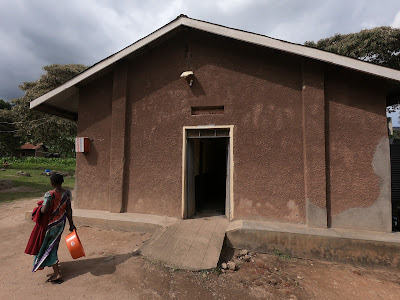Richard M Kavuma explains that the structure of the Ugandan healthcare system, and the facilities available in villages, work on a referral basis. If a level II facility cannot handle a case, it refers it to a unit the next level up. Services in public facilities are supposed to be free, but in many cases health workers extort money from patients desperate for services. Often units don’t have the essential drugs, meaning the patients have to buy them from pharmacies or other drug sellers. The structure of Uganda’s health care system, and how it relates to the MAAP Foundation clinics, is detailed below:
VILLAGE HEALTH TEAMS/COMMUNITY MEDICINE DISTRIBUTORS
The first contact for someone living in a rural area would be a community medicine distributor or a member of a village health team (VHT). Each village is supposed to have these volunteers, but in many cases they are either non-existent or they do not have basic drugs for diseases such as malaria. In some locations, the African Medical and Research Foundation (Amref) project has re-energized the village health team structure through training and giving members bicycles. They still have no medicine, but they can advise patients and refer them to health centers.
HEALTH CENTRE II
According to the Ugandan government’s health policy, every parish is supposed to have one of these centers. A Health Center II facility, serving a few thousand people, should be able to treat common diseases like malaria. It is supposed to be led by an enrolled nurse, working with a midwife, two nursing assistants and a health assistant. It runs an out-patient clinic, treating common diseases and offering antenatal care. Of many parish clinics only a rare parish has a Health Center II. Few recently add a laboratory built for it by organizations like MAAP Foundation projects.
HEALTH CENTRE III
A Health Center III facility should be found in every sub-county in Uganda. These centers should have about 18 staff, led by a senior clinical officer, who run a general outpatient clinic and a maternity ward. It should also have a functioning laboratory. Many sub-counties do not, however, because it hosts a larger facility as described below.
HEALTH CENTRE IV
This level of health facility serves a county or a parliamentary constituency. For example, a Health Center IV, might be located just outside a trading center and thus is the main facility for a group of sub-counties, which make up a larger county. A Health Center IV is a mini hospital. It should have the kind of services found at Health Center III, but it should have wards for men, women, and children and should be able to admit patients. It should have a senior medical officer and another doctor as well as a theatre for carrying out emergency operations. Although an example health center might have 34 beds and see up to 100 out-patients a day, often the clinic has no doctor. It is run by two clinical officers. It may have a theatre but most likely does not function as such because of lack of water, power, needed supplies like anesthesia and other smaller installations.
HOSPITAL
Ideally, each district is supposed to have a hospital, which should have all the services offered at a Health Center IV, plus specialized clinics – such as those for mental health and dentistry and consultant physicians. Typically, a district hospital, in a typical town, can be a regional referral hospital. It caters to several particular regions, meaning it gets cases referred from other district hospitals.








